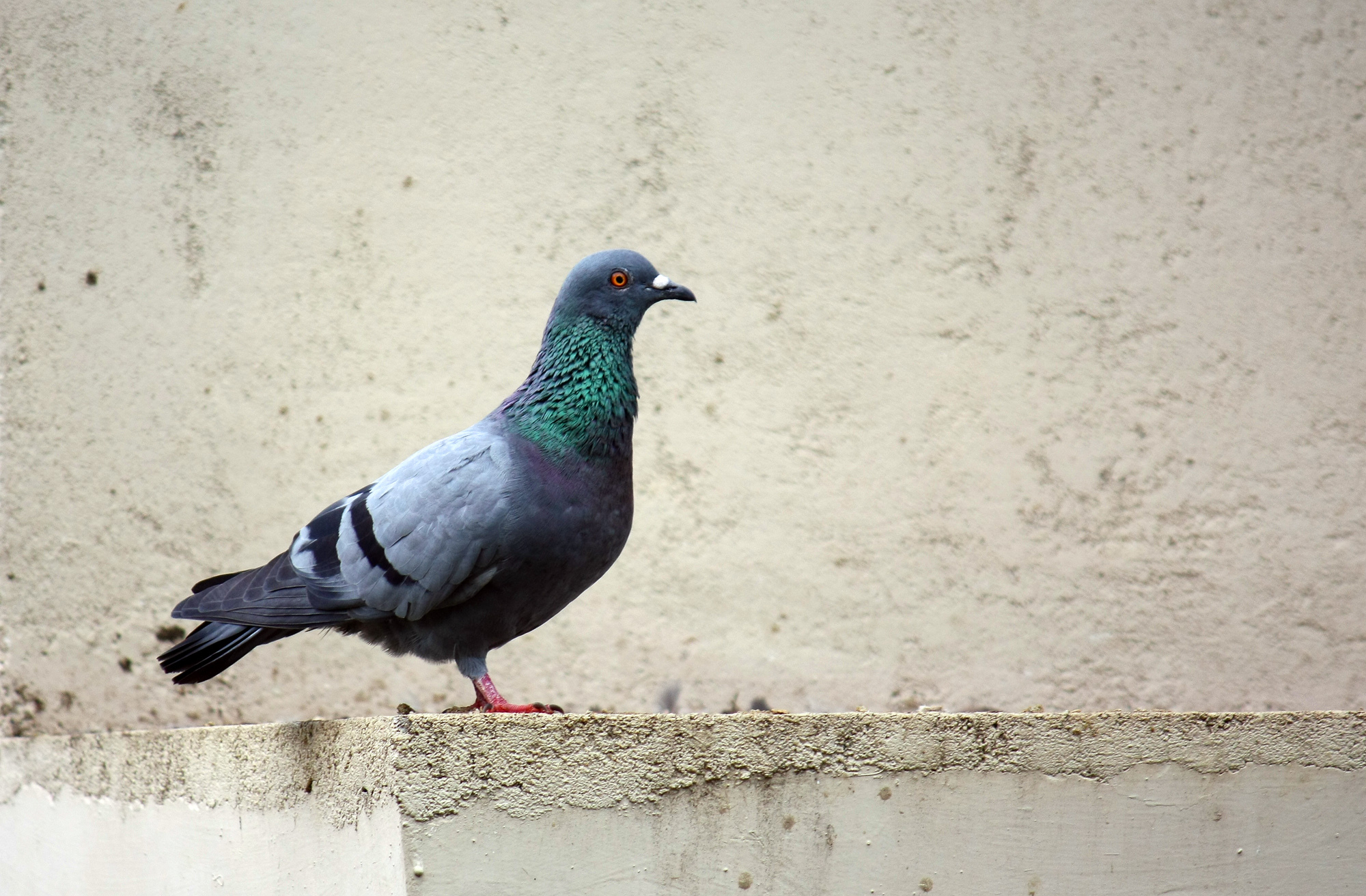 LINKED PAPER
LINKED PAPER
Rapid assessment of the extent of feral introgression in British and Irish Rock Dove Columba livia populations. Smith, W.J. 2023 Ibis. doi: 10.1111/ibi.13213 VIEW
Rock Doves (Columba livia) are fascinating birds. Compared to their familiar cousins, the feral and domestic pigeons (also C. livia), they retain a ‘wild’ character, nesting in caves, and flying for miles every day to feed on open land. Rock Doves have played a significant role in human history, providing us with a source of protein for hundreds of years, and representing the biblical Holy Spirit. It’s even been suggested that Tolkien’s Gollum was inspired by a particular Irish cave, where the doves’ crooning and murmuring echoed and distorted. The biggest global threat to the Rock Dove is hybridisation with introduced feral pigeons. In many regions, Rock Doves have been replaced with wild-feral hybrids. Within the British Isles, they are extinct in Wales and England, but hang on in the western parts of Ireland, and northwest Scotland. It is, however, often difficult to distinguish Rock Doves and feral pigeons, especially from a distance.
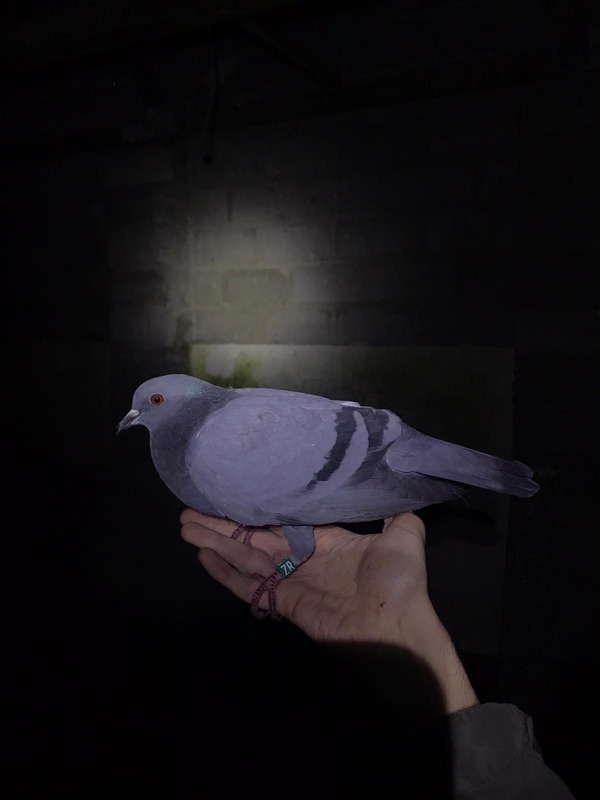
Figure 1 A Rock Dove with ‘wildtype’ (or ‘blue bar’) plumage. This bird was caught in 2023 in Uist, Outer Hebrides, where Rock Doves have so far escaped significant wild-feral hybridisation. Note the green leg ring, part of efforts to monitor this important population. Rock Dove handling was carried out under British Trust for Ornithology ringing permits.
I carried out a small study to explore plumage differences among different pigeon populations in the British Isles. I was particularly inspired by a paper by Raymond Hewson on the status of Scotland’s Rock Doves in 1965. Although Rock Doves and feral pigeons have different head shape ‘morphotypes’, it can be difficult to see this at a distance. Rather than looking at individual pigeons, he suggested that plumage variation within flocks could provide a way of inferring Rock Dove or feral pigeon status. This is based on the knowledge that Rock Doves almost exclusively have ‘wildtype’ (or ‘blue bar’) plumage – slate grey feathers with two black wing bars and a white rump patch. Contrastingly, feral pigeons come in a mixture of colours and patterns. Just to confuse things, some feral pigeons have ‘wildtype’ plumage, so it can be tricky to distinguish an individual Rock Dove from a feral pigeon with ‘wildtype’ plumage. Hewson suggested that a flock in which >75% of birds have wildtype plumage would be ‘mainly’ Rock Doves. Higher proportions of birds with non-wildtype plumage would signify that the population had experienced higher levels of wild-feral hybridisation.
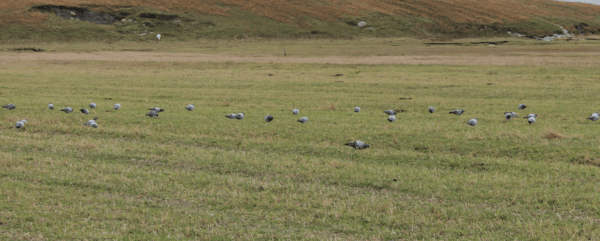
Figure 2 A flock of Rock Doves, showing that all individuals have identical ‘wildtype’ plumage. This photograph was taken on Berneray, Outer Hebrides, in 2022. If feral pigeons began to interbreed with this population, we would start to see more variation in plumage colour and pattern among the birds.
Using data collected by citizen scientists, from social media, and by myself whilst on fieldwork trips, I recorded Rock Dove morphotype (i.e., did birds at that location have the head shape of a Rock Dove, feral pigeon or intermediate?) and the proportion of birds in a flock which had wildtype plumage. I found that within flocks where >75% of birds had the wildtype plumage morph, individual birds had the Rock Dove morphotype. Below this threshold, birds were either feral pigeons or intermediate. This shows that Hewson’s 1965 suggestion correctly distinguishes Rock Dove and feral pigeon populations, providing a quick and easy way of mapping the distribution of the Rock Dove. Following this, I compared the proportion of birds with aberrant (i.e., non-wildtype) plumages at sites where both myself and Hewson (in 1965) had received plumage count data. This showed that the proportion of birds with feral pigeon plumages was increasing at most sites, and on only a handful of Scottish islands have the Rock Doves escaped significant contact with feral pigeons – providing further evidence of the range contraction of true Rock Doves. Finally, I mapped the plumage proportions and morphotype data to characterise the range of the wild Rock Dove in the British Isles. This showed that plumage data agrees with DNA results from previous studies, highlighting that plumage provides a simple and accurate way to distinguish between Rock Dove and feral pigeon colonies, and to estimate the degree of wild-feral interbreeding that has occurred.
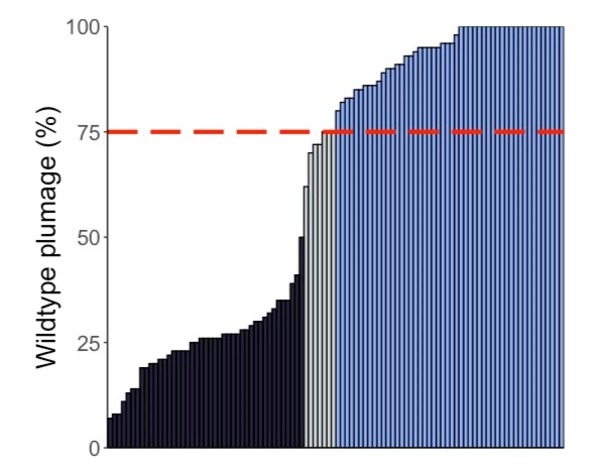
Figure 3 Plot showing that the percentage of birds with wildtype plumage can be used to infer the Rock Dove or feral pigeon status of the population. Each bar is a flock count, with the colour indicating the head shape/morphotype of birds at that site. Above Hewson’s suggested 75% threshold, flocks consist of Rock Doves (blue). Below this plumage threshold, flocks are composed of feral pigeons (dark grey) or birds with intermediate or mixed head morphotypes (light grey).
These results will help us to develop a better understanding of the Rock Dove. We will be able to identify variation in the extent of hybridisation among different populations, and through time. This will enable us to determine the conservation status of the truly wild Rock Dove, and to track the impact of new feral pigeon invasions. There is, of course, scope for further research. Firstly, there are various Rock Dove subspecies, from west Africa across the Middle East to southern India. Most of these have unknown genomic status. They also differ slightly in appearance from the nominate livia, so it will be necessary to explore whether plumage-based assessments are useful across the species’ global range. Also, now that we have identified the link between morphology and plumage at the flock level, it will be important to look at the individual level. Whilst we know that there are at least some morphological differences between Rock Doves and feral pigeons, it may be possible to accurately determine wild or feral ancestry from in-depth morphological assessments of individuals.
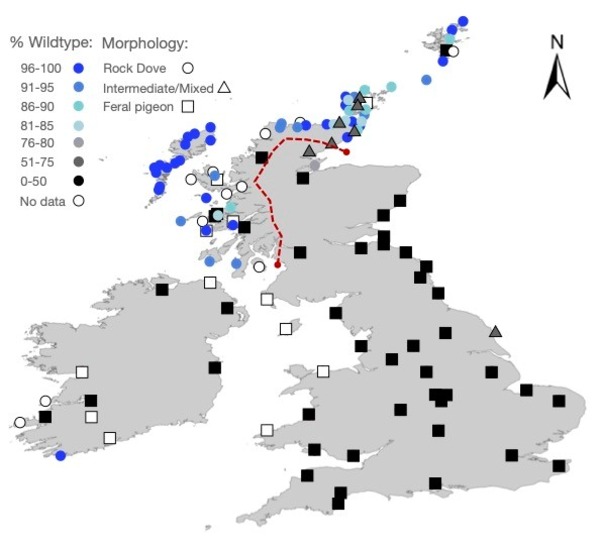
Figure 4 Map showing the geographic variation in pigeon morphotype and flock plumage proportions. The Rock Dove’s distribution along the west of Ireland and northwest Scotland is clear. It is also possible to infer variation in wild-feral hybridisation among Rock Dove populations. Those in the Outer Hebrides, especially in Uist, seem to have experienced the least contact with feral pigeons. The red dashed line indicates the traditionally accepted Scottish range of the wild Rock Dove.
Finally, as well as these plumage-based and genomic studies, I have started monitoring the population of Rock Doves on Uist, Outer Hebrides. This population is the least hybridised in the British Isles, and so provides an opportunity to learn more about the natural history of this understudied bird. Colour ringing is a major component of the study. If you live in Uist, or visit on holiday, please keep an eye out for green leg rings!
References
Hewson, R. 1967. The rock dove in Scotland in 1965. Scottish Birds 4:359-371. VIEW
Johnston, R. F. 1992. Evolution in the rock dove: skeletal morphology. The Auk 109:530-542. VIEW
Johnston, R., Causey, D. & Johnson, S. 1988. European populations of the rock dove Columba livia and genotypic extinction. American Midland Naturalist 120:1-10. VIEW
Rhymer, J.M. & Simberloff, D. 1996. Extinction by hybridization and introgression. Annual Review of Ecology and Systematics 27:83-109. VIEW
Smith, W.J., Quilodrán, C.S., Jezierski, M.T., Sendell‐Price, A.T., Clegg, S.M. 2022. The wild ancestors of domestic animals as a neglected and threatened component of biodiversity. Conservation Biology 36:e13867. VIEW
Smith, W.J., Sendell-Price, A.T., Fayet, A.L., Schweizer, T.M., Jezierski, M.T., van de Kerkhof, C., Sheldon, B.C., Ruegg, K.C., Kelly, S., Turnbull, L.A., Clegg, S.M. 2022. Limited domestic introgression in a final refuge of the wild pigeon. iScience 25:104620. VIEW
Image credit
Top right: Rock Dove © Anton Croos CC BY SA 3.0 Wikimedia Commons.
If you want to write about your research in #theBOUblog, then please see here.


